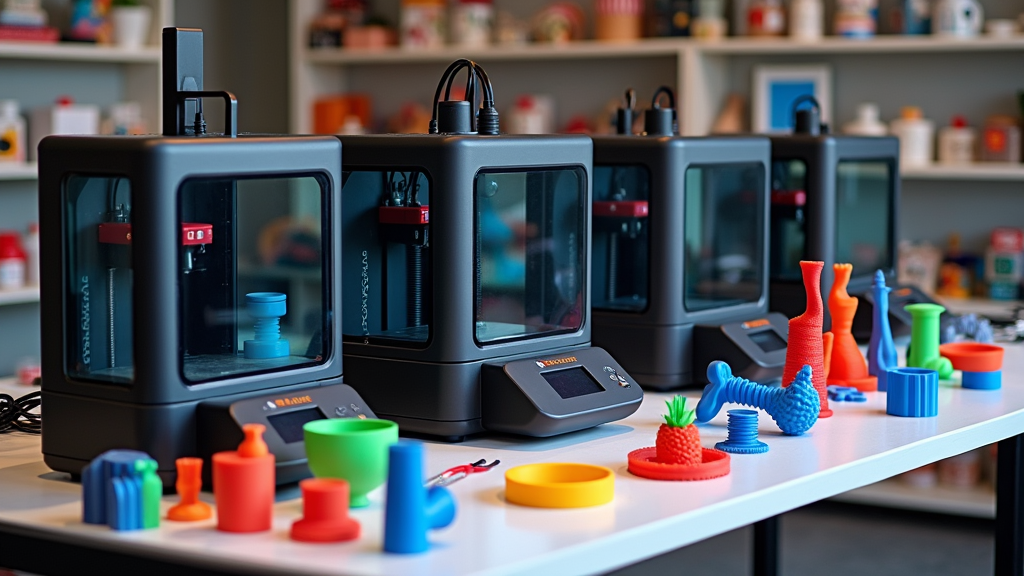
Once a niche tool for tech enthusiasts and DIY hobbyists, the desktop 3D printer has undergone a remarkable transformation. What began as a fascinating new way to create plastic trinkets and prototypes has evolved into a sophisticated manufacturing solution with applications spanning diverse and critical fields. Today, these compact machines are no longer confined to workshops; they’re making an impact in dental offices, jewelry studios, and even hospitals, revolutionizing how we create and innovate.
Beyond the Prototype: A World of Applications
The versatility of desktop 3D printing is truly astounding. No longer limited to simple models, these printers are now capable of producing high-precision, functional parts with a range of materials.
- Dental Implants: Imagine a dentist being able to print custom dental implants or aligners right in their office. This is becoming a reality, enabling faster and more personalized treatment for patients.
- Exquisite Jewelry: Jewelers are leveraging 3D printing to create intricate designs that would be incredibly difficult, if not impossible, to achieve with traditional methods. This allows for unparalleled customization and precision in their craft.
- Custom Prosthetics: For individuals needing prosthetics, 3D printing offers a game-changing solution. Custom-fitted and often more affordable prosthetics can be designed and produced quickly, improving the quality of life for many.
- Bioprinted Tissues: Perhaps the most groundbreaking application is in the medical field, where researchers are experimenting with bioprinting tissues. Although still in its early stages, this technology holds immense promise for organ repair and regeneration, potentially revolutionizing the field of medicine.
The Power of Accessibility
One of the key drivers behind this widespread adoption is the increasing accessibility of desktop 3D printing. Printers are becoming increasingly affordable, user-friendly, and capable, putting powerful manufacturing tools within the reach of a broader audience. This democratization of creation is fostering innovation at an unprecedented rate.
From a hobbyist’s garage to a cutting-edge hospital lab, the journey of the desktop 3D printer is a testament to human ingenuity and the power of technological advancement. As materials and printing techniques continue to evolve, we can only imagine the next incredible chapter in this revolution. Op printers are now used for dental implants, jewelry, prosthetics, and even bioprinted tissues.From Hobbyists to Hospitals: The Incredible Journey of Desktop 3D Printing
Once a niche tool for tech enthusiasts and DIY hobbyists, the desktop 3D printer has undergone a remarkable transformation. What began as a fascinating new way to create plastic trinkets and prototypes has evolved into a sophisticated manufacturing solution with applications spanning diverse and critical fields. Today, these compact machines are no longer confined to workshops; they’re making an impact in dental offices, jewelry studios, and even hospitals, revolutionizing how we create and innovate.
Beyond the Prototype: A World of Applications
The versatility of desktop 3D printing is truly astounding. No longer limited to simple models, these printers are now capable of producing high-precision, functional parts with a range of materials.
- Dental Implants: Imagine a dentist being able to print custom dental implants or aligners right in their office. This is becoming a reality, enabling faster and more personalized treatment for patients.
- Exquisite Jewelry: Jewelers are leveraging 3D printing to create intricate designs that would be incredibly difficult, if not impossible, to achieve with traditional methods. This allows for unparalleled customization and precision in their craft.
- Custom Prosthetics: For individuals needing prosthetics, 3D printing offers a game-changing solution. Custom-fitted and often more affordable prosthetics can be designed and produced quickly, improving the quality of life for many.
- Bioprinted Tissues: Perhaps the most groundbreaking application is in the medical field, where researchers are experimenting with bioprinting tissues. Although still in its early stages, this technology holds immense promise for organ repair and regeneration, potentially revolutionizing the field of medicine.
The Power of Accessibility
One of the key drivers behind this widespread adoption is the increasing accessibility of desktop 3D printing. Printers are becoming increasingly affordable, user-friendly, and capable, putting powerful manufacturing tools within the reach of a broader audience. This democratization of creation is fostering innovation at an unprecedented rate.
From a hobbyist’s garage to a cutting-edge hospital lab, the journey of the desktop 3D printer is a testament to human ingenuity and the power of technological advancement. As materials and printing techniques continue to evolve, we can only imagine the next incredible chapter in this revolution. Op printers are now used for dental implants, jewelry, prosthetics, and even bioprinted tissues.

